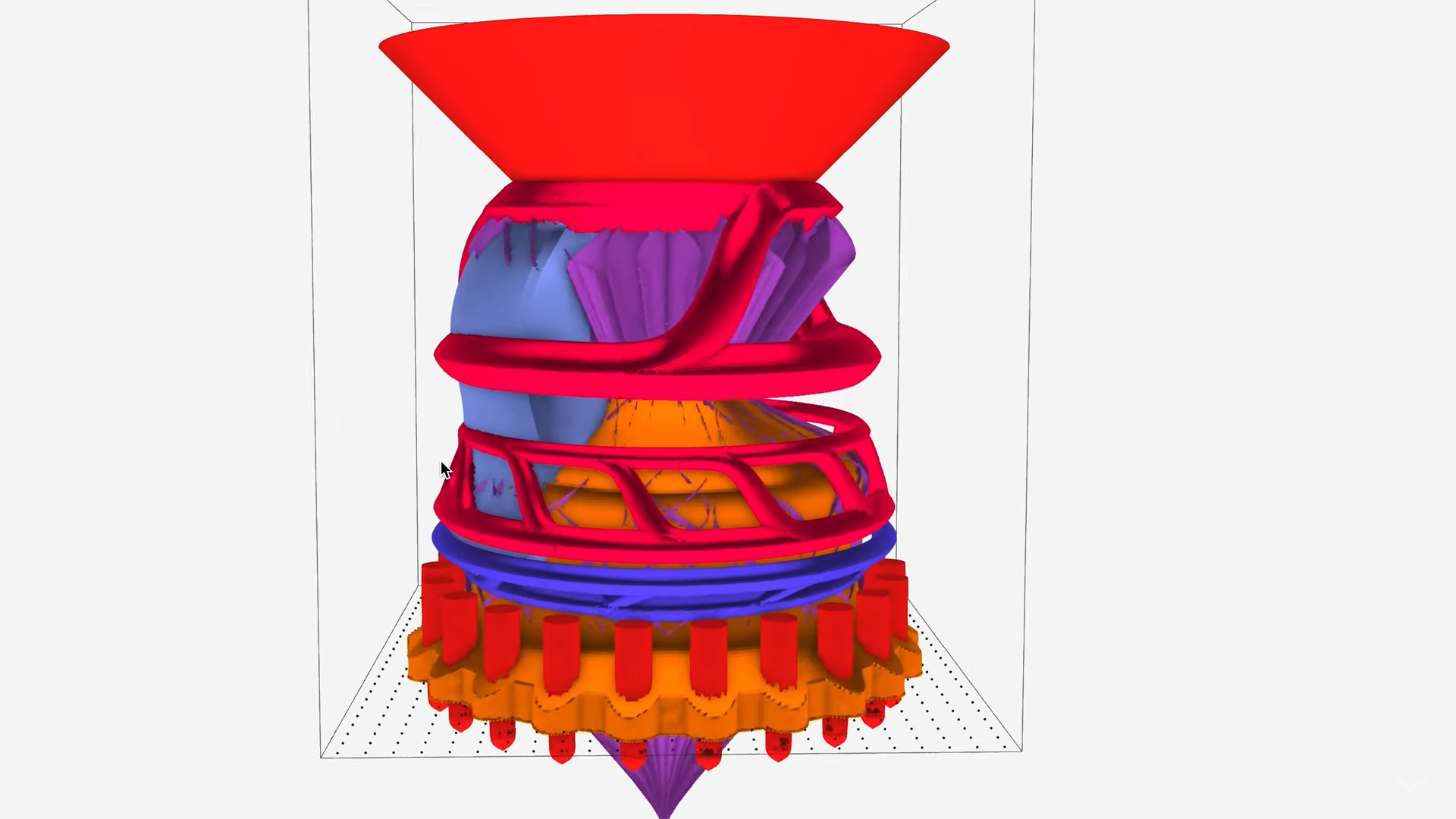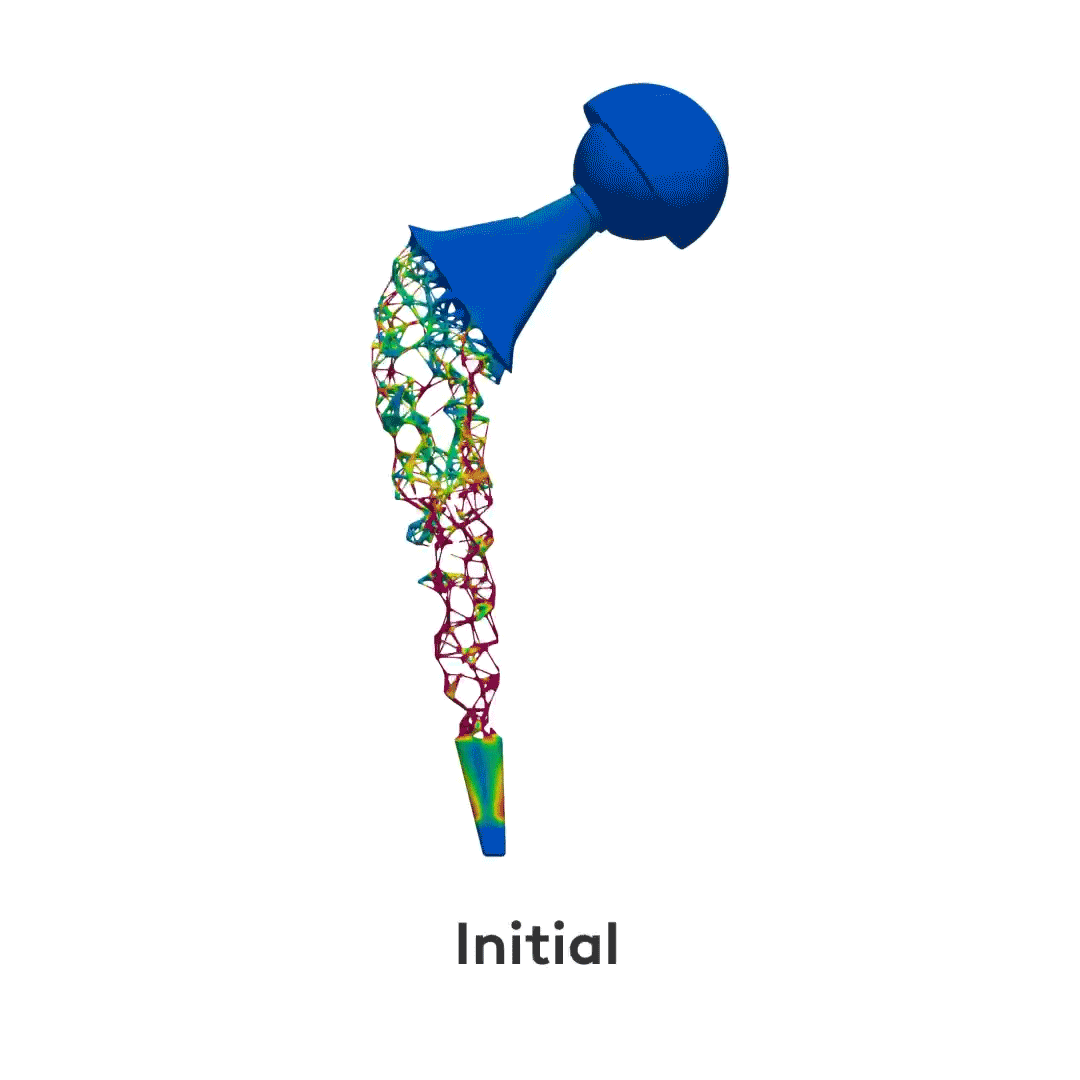Simulation-driven design
Published on
Recently, I wondered what cutting-edge CAD solutions had made it into an application. Thus, I discovered a company that loudly announced the introduction of artificial intelligence into the design process and showed tangible results - Hyperganic.

Unfortunately, the big words about using AI turned out to be nothing more than a marketing ploy. Even on their page, they first mention that the product is related to algorithmic design. Although AI is mentioned in the following sections, in practice I did not find any traces of it in the Hyperganic Core product. This program creates three-dimensional models according to the instructions, supplemented by various filters and tailored mainly for products made by additive methods.

Example with the creation of another engine starting at 1:43.
But Hyperganic did not stop there and decided to implement a simulation solution into their product. To do this, in early 2022, they acquired DirectFEM company. Simulation using the finite element method allows you to create feedback in the process of generating objects. At the time of writing, only simple cases of stationary thermal conductivity and elastic deformation are available for simulation in Hyperganic Core. But the implemented innovation already allows writing programs to generate not only eye candy parts but also practical ones. At the current stage, this looks like a reinvention of topological optimization. However, the inherent potential and such an approach to design inspire hope. I would like to believe that the developers will create a tool that surpasses the existing solutions for topological optimization in terms of influencing not on the level of the objects’ physical model but on the very idea of it.

The products of one of the leaders in the field of computer simulation, Ansys, for topological optimization, take the geometry of the object and the imposed restrictions (boundary conditions) as input and cannot go beyond them. As restrictions, you can, for example, exclude a specific area from optimization so that the attachment points do not disappear since a particular area of contact is needed for fixing the part. In classical design this remains in the engineer’s head and the machine does not need to know about it. But, if during the simulation the machine has full access to the algorithm by which decisions were made, using feedback it is possible to influence the geometry as profoundly as the generating algorithm reveals it.

Simulation-driven design means obtaining simulation results simultaneously with designing; the question remains how to apply these results. Ansys developed the “first-of-its-kind product” according to the ideology of simulation-driven design - Ansys Discovery. In essence, it is a closer fusion of CAD + CAE, but still with a clear border between them - a person. Ansys Discovery allows you to design, apply constraints and forces, and view the results of a simulation in one environment.
.gif)
Competitors have been able to do all this without such visibility for a long time, and even in Ansys Workbench itself, you could have done this for a long time. It’s just that now it’s more convenient, simple and sometimes faster. The approach has not changed radically: the user models something, starts the calculation, gets the result and draws conclusions on how to deal with the structures’ design. Of course, this greatly speeds up the process of designing complex components and systems, but it has yet to be possible to talk about a qualitative jump in performance.

This work is licensed under a Creative Commons Attribuition-ShareAlike 4.0 International License .
